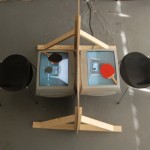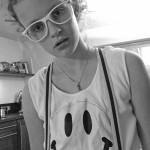Table tennis played on TV tops? What you see is not at all what you…
Disorganised three senses
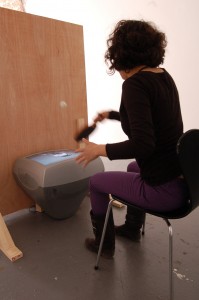 Thursday 6th I invited Laura and Laura to come play at Tractie. Shot a lot of footage that I haven’t had time to look at yet, hope to make a a short video eventually.
Thursday 6th I invited Laura and Laura to come play at Tractie. Shot a lot of footage that I haven’t had time to look at yet, hope to make a a short video eventually.
Pics I took show you part of the action. It’s not easy to master, this game. Laura made a rule for herself: a series of at least 4 without the ball hitting the ground. She got lots of practice because I filmed long sequences. In the end, she did series of 8 and more!
This is why it is so difficult. There is visual disorientation: the extra info from the screen, visualising meta-perception that normally only happens in your head. Then there is auditive disorientation: the sound that your ball makes mixes with the sound the other players ball makes. Then there is disorientation of the sense of proprioception (the sense of the relative position of neighbouring parts of the body), caused by it not being yourself you see on the screen – which you expect – but the opposite player with whom you are out of sync. Also the TV screen is concave, so the ball is in a curved universe while you (think you) are in Euclidian space. Note: maybe make the dividing screen concave as well?
So I managed to disorganise three senses, which makes playing a complex and somewhat unsettling affair. Carsten Holler, whose motto is to ‘spread doubt’, would appreciate this I think.
I noticed that when there is a lot of action on the TV screen (meaning the opposite player is very active), a player makes more mistakes. They tell me that while playing they don’t see what is going on on the screen. So they try to make their brains ignore the information from the screen. But it still influences them.
Later: the game defeats players desire to be (seen as) skillfull, in control, masters of the game. Au contraire, the game shows how not in-control they are, how the game involves them in patterns out of conscious control. Even if players are reluctant to give into the surprises the game has in store for them, while playing they have to let go: their goal-orientation giving way to a more flexible mindset. Which is in itself a metaphor for how the mind works. More often than not, a mind plays its own recordings (daydreams, hallucinations, fantasies) and has its own streams of consciousness, very little of which is actively under control. ” Dreams exist to amuse the brain into continued labile alertness. Play exists to amuse the body to the same consummation of wholeness in a virtual world.” The Ambiguity of Play, page 62.
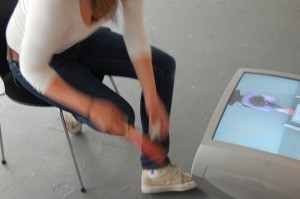
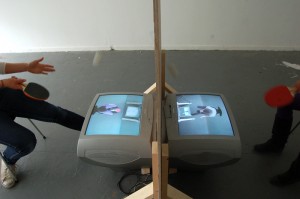
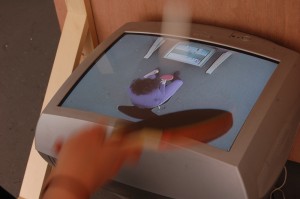
| « Jump | <-- previous post | next post --> | Perfect circles » |
|---|
